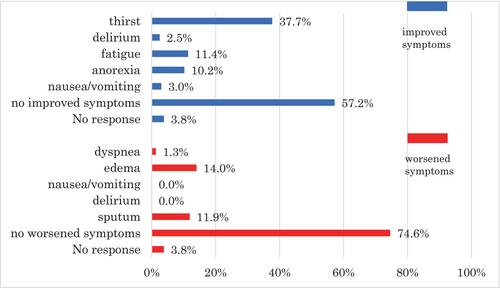Use of artificial hydration in patients diagnosed with senility as the cause of death by home care physicians: A cross₋sectional study
Abstract
Background
The aim of this study was to investigate the frequency, effectiveness, and reasons for the use of artificial hydration (AH) in senile patients in the last week, and patient-related factors associated with its usage.
Methods
Between April and May 2023, I conducted a cross₋sectional study among medical institutions affiliated with the Japan Network of Home Care Supporting Clinics. Eligible cases included those in which senility was listed as the cause of death on the death certificate from January 1, 2022, to December 31, 2022. The questions asked use of AH, reasons for AH, and symptoms that improved or worsened with AH. Patient characteristics, including age, gender, place of death, length of treatment, and complication of dementia, were also asked. Descriptive statistics were performed. Univariate and multivariate analyses were conducted to examine the association between patient characteristics and the use of AH.
Results
Eighty-three medical institutions (12.5%) provided responses, contributing a total of 714 cases. AH was administered in 236 cases (33.1%). The most common reason was “due to family preference” in 110 cases (46.6%). One hundred thirty-five cases (57.2%) reported “no improved symptoms,” while symptom worsening was reported as “no worsened symptoms” in 176 cases (74.6%). Multivariate analysis on 699 cases using complete-case analysis identified age (risk ratio [RR]:0.98, 95% confidence interval [CI]: 0.96–0.99) and female (RR:0.73, 95% CI:0.58–0.92) as factors associated with the use of AH.
Conclusion
This study revealed that AH was commonly used based on family preferences and to alleviate psychological burdens on the family.


 求助内容:
求助内容: 应助结果提醒方式:
应助结果提醒方式:


